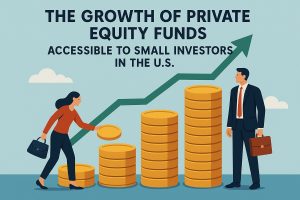The growth of artificial intelligence and automation ETFs in the US is carving a new pathway in the investment landscape. As AI-driven technologies transform industries, ETFs focusing on these sectors are gaining popularity among investors. With promises of significant returns, these funds are drawing attention while also posing unique risks. This burgeoning trend in the investment world is reshaping how portfolios are constructed, offering both opportunities and challenges for investors.
In 2025, these ETFs are expected to continue their upward trajectory, buoyed by technological advancements and increasing adoption in various sectors. Investors are keen to capitalize on this momentum, but it’s essential to understand the intricacies involved. While the potential for high returns is alluring, the volatile nature of the tech market necessitates careful analysis and strategic planning.
The rise of artificial intelligence and automation ETFs

The rise of artificial intelligence and automation ETFs signifies a significant shift in market dynamics. These financial instruments allow investors to access a broad array of tech stocks, diversifying their portfolios with promising high-growth assets. The trend is driven by a growing confidence in AI technologies and their transformative potential across various industries, from healthcare to finance.
Investors are particularly drawn to the scalability of AI solutions, which offer efficiency and innovation. However, it is crucial to remember that the tech sector can be unpredictable, with rapid changes affecting stock prices. Hence, understanding market trends and keeping abreast of technological developments is essential for making informed investment choices in this dynamic field.
Key factors influencing ETF performance
Several factors influence the performance of artificial intelligence and automation ETFs, including technological advancements, regulatory environments, and market demand. Investors should consider how quickly technologies are being adopted and whether they are being regulated appropriately, as these aspects can significantly impact the growth trajectory of ETFs.
Moreover, geopolitical tensions and global economic health remain influential. In 2025, the rate at which industries integrate AI solutions will largely dictate ETF success. Therefore, staying informed about macroeconomic factors and technological breakthroughs can help investors mitigate risks and maximize returns.
Opportunities and challenges in 2025
The year 2025 presents both opportunities and challenges for investors in the realm of artificial intelligence and automation ETFs. On the one hand, the rapid growth of AI technologies offers unprecedented opportunities for profit. As companies continue to innovate and integrate AI, investors can benefit from these technological advancements.
On the other hand, these opportunities come with inherent risks, such as market volatility and the potential for disruptive technologies to redefine sectors unexpectedly. It’s essential for investors to develop a comprehensive strategy that balances potential gains with associated risks. This includes diversifying investments and being agile in response to market shifts.
Strategies for investing in AI and automation ETFs
To effectively invest in artificial intelligence and automation ETFs, consider adopting a diversified approach. Spreading investments across multiple ETFs can reduce risk while capturing growth in different areas of the tech sector. Regular portfolio reviews and adjusting investment strategies based on market conditions are crucial.
Additionally, leveraging the expertise of financial advisors can provide valuable insights into market trends and help tailor investment strategies to individual risk tolerance and financial goals. This proactive approach will be crucial in navigating the challenges and capitalizing on the opportunities presented by AI and automation technologies.
Final thoughts on the future of AI and automation ETFs
In conclusion, the growth of artificial intelligence and automation ETFs in 2025 offers both exciting opportunities and significant risks. The tech-driven market is poised for expansion, but strategic and informed investing is necessary to harness its full potential. As investors explore these ETFs, staying informed about technological developments and market dynamics will be paramount.
Emphasizing diversification and professional guidance can maximize returns while minimizing risks associated with market volatility. By approaching investment in AI and automation ETFs with a well-rounded strategy, investors can navigate the complexities of this emerging market and position themselves for success.



